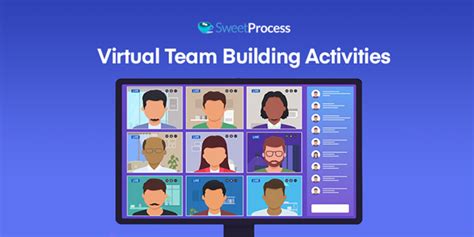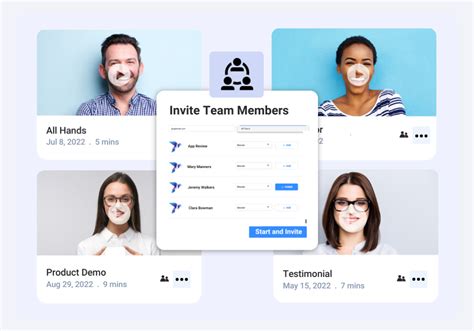In 2024, remote work continues to be a dominant trend, making team building more crucial than ever for maintaining strong, connected teams. While physical distance poses challenges, it also opens opportunities for innovative and engaging team-building activities tailored to adults in a virtual environment. This article explores the significance of team building for remote teams, offering a comprehensive guide to virtual activities, interactive workshops, and the tools that facilitate them. By examining success stories, providing practical tips, and looking ahead to future trends, we aim to equip businesses with the strategies needed to boost morale and foster collaboration in remote teams.
Discover the intricacies of this topic with xipres.xyz
1. Importance of Team Building for Remote Teams
Remote teams rely on effective team building to cultivate connection, collaboration, and a sense of belonging, bridging the physical distance. The lack of spontaneous interactions and camaraderie common in traditional offices can isolate remote employees, leading to disengagement. This, in turn, can negatively affect productivity and overall team morale.
Team-building activities serve as a bridge, fostering opportunities for employees to cultivate trust, enhance communication, and collaborate more effectively. These activities infuse human connection into digital interactions, fostering a sense of belonging and support among team members. Moreover, they contribute to a positive work culture, where individuals feel valued and motivated to excel in their contributions.
Furthermore, consistent team-building initiatives can proactively identify and resolve communication or collaboration issues, mitigating potential conflicts and misunderstandings. In the dynamic remote work environment, investing in team building is not merely a desirable addition but a vital strategy for maintaining team unity, enhancing performance, and guaranteeing long-term success in a virtual setting.

2. Virtual Team Building Activities
Virtual team building activities are crucial for maintaining connection and engagement among remote teams. These activities span a wide range, from casual icebreakers to elaborate events, all aimed at cultivating collaboration and strengthening relationships. Popular choices include virtual trivia games, offering friendly competition among team members, and online escape rooms, which challenge participants to work together to solve puzzles, thereby enhancing problem-solving skills and teamwork.
Hosting virtual coffee breaks or lunch meetings is another effective way to encourage team bonding. These casual settings provide a space for team members to interact and connect outside of work-related tasks. Additionally, themed events such as virtual happy hours or costume parties offer opportunities for team members to express their personalities, fostering a fun and relaxed atmosphere.
Online workshops and training sessions can double as team-building opportunities, particularly when they emphasize skill development that necessitates group participation. These activities not only facilitate learning but also foster collaboration and idea sharing. By integrating diverse virtual team-building activities, businesses can cultivate strong, unified teams that flourish in a remote work setting.

3. Interactive Workshops and Training
Interactive workshops and training sessions serve as potent tools for remote team building. They provide a platform for employees to acquire new skills while fostering collaboration. Unlike traditional training methods, these sessions encourage active participation, demanding team members to engage with the content and one another in meaningful ways. This interactive approach not only enhances learning but also strengthens bonds between team members, fostering a sense of unity and shared purpose.
Workshops encompass a diverse array of subjects, spanning both technical proficiencies, such as software expertise, and soft skills, such as communication and leadership. When conducted virtually, these sessions frequently leverage breakout rooms for intimate group discussions, hands-on exercises, and real-time feedback, all of which foster collaboration and knowledge exchange.
Team members can actively contribute to a culture of continuous learning and support by leading workshops and sharing their expertise with colleagues. Enhancing the training experience with gamification elements, such as quizzes or interactive polls, can make learning more engaging and enjoyable. Through well-designed interactive workshops and training programs, remote teams can cultivate strong bonds, enhance performance, and foster a collaborative, supportive work environment.

4. Tools and Platforms
Successful remote team building hinges on the use of appropriate tools and platforms to foster effortless interaction and engagement amongst team members. Video conferencing tools, such as Zoom, Microsoft Teams, and Google Meet, are essential, enabling real-time face-to-face communication that mimics in-person interactions. These platforms commonly incorporate features such as breakout rooms, screen sharing, and interactive whiteboards, which enrich the collaborative experience during virtual activities.
Collaboration tools like Slack and Trello are essential for maintaining continuous communication and managing projects beyond scheduled events. They facilitate the organization of team-building activities by enabling seamless coordination and resource sharing among participants.
For more specialized experiences, platforms like Mural and Miro provide interactive digital canvases, perfect for brainstorming sessions and creative workshops. Online gaming platforms and apps like Kahoot!, QuizBreaker, and Donut are specifically designed for fun and engaging team-building exercises. These platforms offer trivia games, icebreakers, and randomized coffee chats, fostering social interaction and team bonding.
Investing in the right mix of tools provides remote teams with diverse channels for connection, collaboration, and relationship building. By choosing user-friendly and accessible platforms tailored to the team’s specific requirements, organizations can significantly enhance the effectiveness of virtual team-building initiatives, resulting in improved morale and productivity.
5. Success Stories and Case Studies
The effectiveness of remote team-building strategies is illuminated by success stories and case studies. For instance, Buffer, a global tech company, has thrived as a fully remote organization since its founding. To foster strong team bonds, Buffer has incorporated regular virtual team-building activities, such as online game nights and virtual retreats. These initiatives have demonstrably boosted morale, fostering high levels of employee engagement and retention.
Automattic, the force behind WordPress.com, is a shining example of a fully remote company. They cultivate a vibrant culture through regular online workshops and virtual gatherings, fostering collaboration and skill development among their team members. This approach allows them to seamlessly work together, regardless of geographical location or time zone differences.
Another compelling example comes from a marketing agency that employed virtual escape rooms to boost problem-solving abilities and teamwork among their remote workforce. The positive outcomes of these activities were evident in faster project completion times and a more cohesive team environment.
Tailored team-building activities demonstrably yield tangible benefits. These case studies showcase how such activities can enhance productivity, improve communication, and foster a more cohesive remote workforce, ultimately contributing to long-term business success.
6. Tips for Effective Team Building
To build effective remote teams, careful planning and a thoughtful approach are crucial. Activities must be both engaging and meaningful to truly make an impact. Here are some tips to maximize your efforts:
Understand Your Team’s Preferences: By tailoring activities to match the interests and personalities of your team members, you can create a more engaging and enjoyable experience for everyone. Conducting surveys or engaging in informal check-ins can help you identify the types of activities that resonate best with them.
Set Clear Objectives: Clearly define the desired outcome for each team-building activity. Whether it’s enhancing communication, sparking creativity, or simply providing a fun experience, having specific objectives will guide the design of relevant and purposeful activities.
Foster Inclusivity: Make sure everyone can participate in activities, no matter where they are, what time it is, or their technical skills. This might mean scheduling events at various times or having different activity choices.
Encourage Participation: Foster an environment where all team members feel valued and heard, promoting active involvement. This can be achieved through initiatives like rotating leadership roles or allowing participants to choose activities, empowering them to contribute meaningfully.
Reflect and Adjust: Following every team-building activity, gather feedback to assess what was successful and what could be improved. Utilize this input to continuously enhance your team-building initiatives, ensuring they maintain their effectiveness and relevance.
7. Future Trends in Remote Team Building
The world of remote work is constantly evolving, and the ways in which remote teams build connections are no exception. One prominent trend in this space is the increasing adoption of immersive technologies, such as virtual reality (VR) and augmented reality (AR). These technologies provide a more interactive and engaging experience, allowing team members to participate in virtual environments that closely resemble real-life situations. For instance, VR platforms can create simulated team-building exercises where participants work together to complete tasks or solve challenges within a shared virtual space.
Another emerging trend is the integration of artificial intelligence (AI) and machine learning to personalize team-building activities. AI-powered tools can analyze team dynamics and preferences, suggesting tailored activities that address specific needs, such as boosting communication or enhancing creativity.
Gamification remains a powerful trend, with increasingly sophisticated and engaging games being created to foster team involvement. By integrating features like leaderboards, rewards, and real-time feedback, team-building activities can become more stimulating and enjoyable.
Furthermore, remote team-building strategies are placing a greater emphasis on mental health and well-being. Companies are actively integrating wellness activities, including virtual yoga sessions and mindfulness workshops, to promote employee health and a balanced work-life.
These future trends indicate a move towards more immersive, personalized,
Incorporating effective team-building activities is crucial for maintaining morale and cohesion in remote teams. By leveraging virtual tools, interactive workshops, and innovative approaches, businesses can create engaging experiences that bridge physical gaps. As remote work continues to evolve, staying adaptable and embracing emerging trends will ensure that teams remain connected, productive, and motivated, ultimately contributing to long-term success.
xipres.xyz